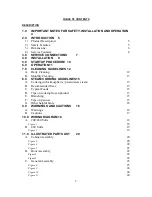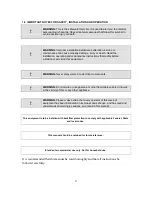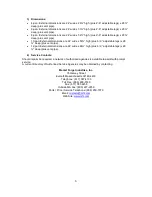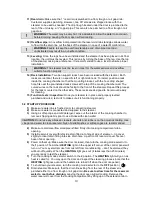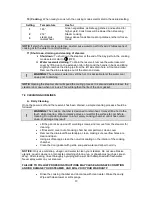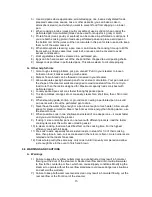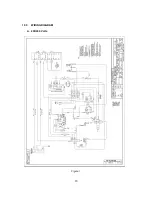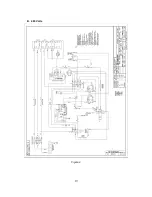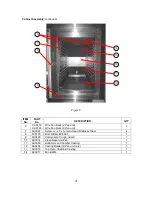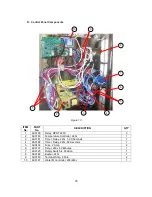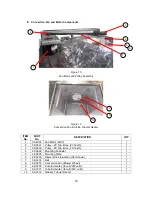
16
3) Use solid pans where appropriate: scrambled eggs, rice, beans, dehydrated foods,
prepared casseroles, sauces, cake or other desserts (you can bake a cake in
atmospheric steam), and when you want to prevent food from dripping on a lower
pan.
4) When cooking proteins (meat, poultry or seafood) use a solid catch pan under the
perforated pan. Accumulated juices can be used for soup stock, gravy or broth.
5) Protein foods (meat, poultry or seafood) can be cooked in perforated or solid pans. If
you are batch-cooking protein foods use perforated pans and place a solid pan on
the bottom rail. All the juices will then accumulate in this pan for later use and to keep
them out of the water reservoir.
6) When atmospheric steaming, a pan cover can increase the cooking time up to 400%.
Items such as frozen casseroles, meat loaf, or sauces can be covered to avoid
excess condensation.
7) Root vegetables should be steamed in a perforated pan.
8) Eggs can be hard cooked out of the shell and then chopped to avoid peeling shells.
9) Always cook potatoes in perforated pans. This allows steam to circulate properly.
G. Other helpful hints
1) Got a tough cleaning problem, pot, pan, utensil? Put it in your steamer to loosen
burned-on food; it makes washing much easier.
2) Stale or frozen bread can be thawed or renewed in your steamer.
3) Allow adequate spacing between pans for even steam circulation. Your pan rails and
the shape of the steamer walls are designed to maximize steam flow. Do not try to
load more than the rack is designed for. Maximum capacity loads cook best with
perforated pans.
4) Loosely packed pans will cook faster than tightly packed pans.
5) To skin tomatoes, oranges etc. more easily, steam for a short time, then chill in cold
water.
6) When steaming pasta, shrimp, or ground meat, nesting a perforated pan in a solid
pan works well. Lift out the perforated pan to drain.
7) Never have the water high enough or a pan low enough to touch water. Allow enough
space for steam circulation. Steam has 6 times more energy than boiling water – use
the steam to cook.
8) When possible, cook in two shallow pans instead of one deeper one – it cooks faster
and you avoid bruising the product.
9) If using ½ size or smaller pans on one level, with different products, load the faster
cooking items last, this will make unloading easier.
10) In steam cooking, load size has little effect on the cooking time. For the highest
efficiency cook with full loads.
11) Pre-cook roasts, especially fat-encrusted roasts, in steam for 1/3 of their cooking
time, then place in oven. Juices are sealed in, there is more flavor, more nutrients are
retained and the roast shrinks less.
12) Cook whole poultry the same way, only cook it until it is nearly completed and allow
just enough time in the oven to finish and brown.
9.0 WARNINGS AND CAUTIONS
A. Warnings
1)
Failure to keep the overflow outlets clear and unobstructed may result in hot water
flowing out the door of the steamer. A blocked overflow and drain could allow water
to flow to the countertop or floor, which can cause slippery conditions. Modifying the
steamer to operate without the overflow standpipe could cause dangerous situations
and will void the warranty.
2)
Failure to keep both water level sensors clean may result in hot water flowing out the
rear overflow or the front door of the steamer.

